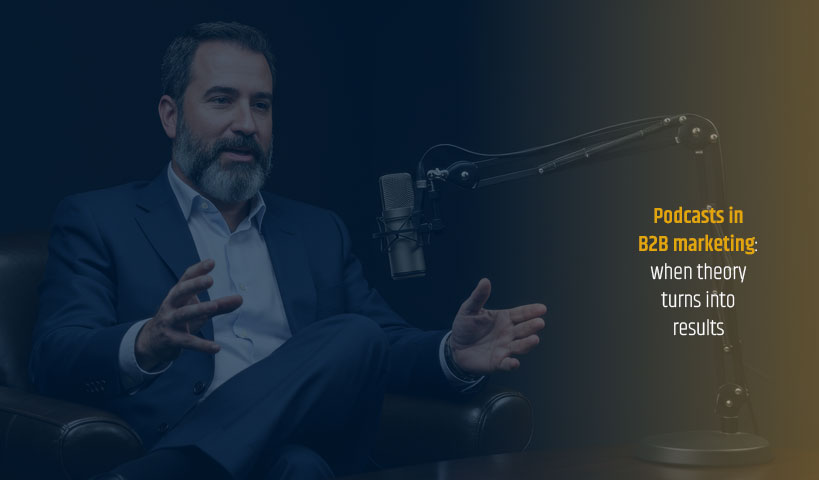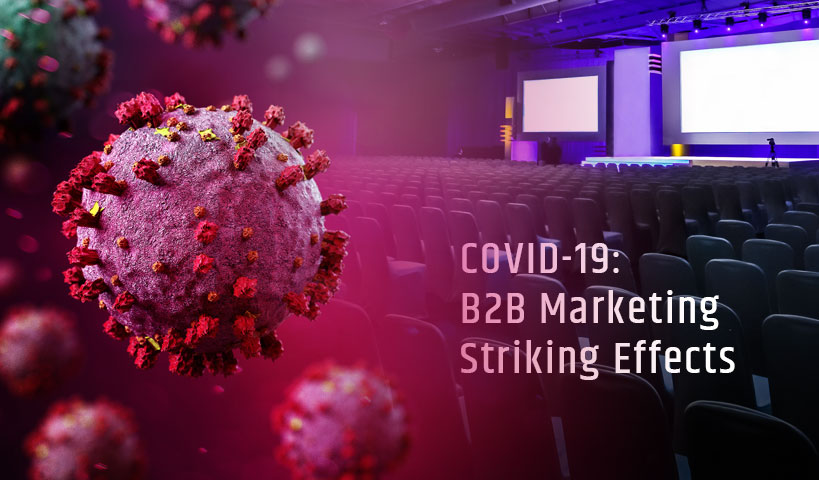
Based on B2B Content Marketing, benchmarks, budgets and trends 2021 statistics,it is clear that the effects of COVID-19 have affected content marketing in 2020 and continue to do so this year.
There is significant data that emerges from this year’s study. First of all, on the short or long-term effects of this Pandemic on B2B marketing, 65% say this will have major or moderate effects. Only 5% say that COVID-19 has or will have no effect on marketing and their success!

Then, with regards to the content conveyed by blogs, webinars, videos, emails and events, I put two graphs side-by-side on the main marketing communication channels used before and during the COVID-19 pandemic. The effects are expected but still, striking:

We see that social networks have disappeared from the equation. I assume that they were considered distribution channels for other content in the graph. Assumption confirmed by this other graph:
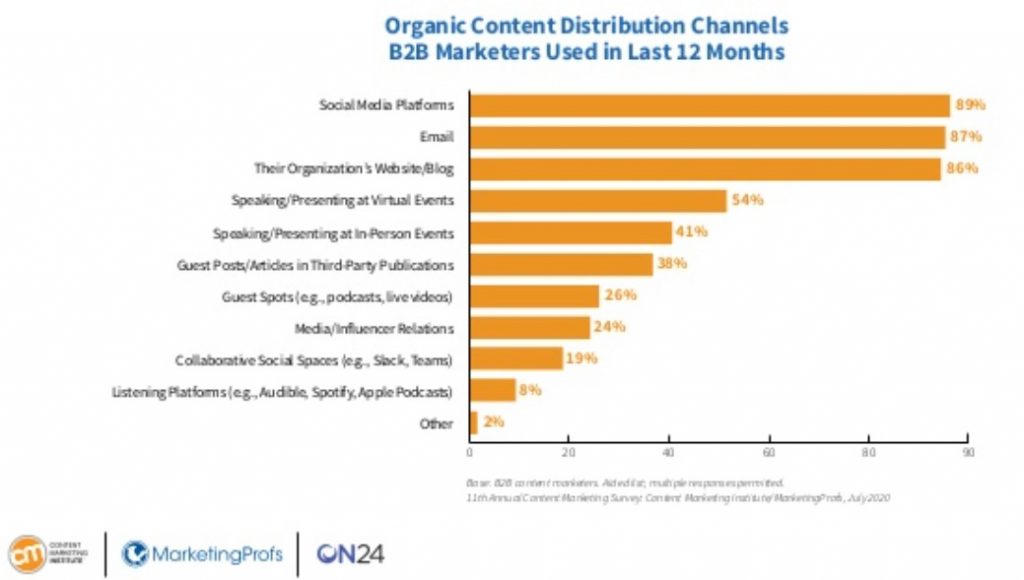
Nevertheless, the winners are the blog posts that top the content list with 93% usage rate compared to 89% last year. It is something, while some are inclined to say that blogs are losing speed:

Other figures from the comparative graphs
Newsletters are down from 81% to 77%. Then comes the main effect of COVID-19: the events in the present are falling from 75% to 42%!!!
And conversely, virtual/webinar events increase from 57% to 67%. Note also a slight decrease in videos but also the appearance of live streaming content at 30% usage rate.
It’s clear that the rise of the use of virtuality in B2B content marketing is being confirmed! And as the vast majority of experts say, this is a trend that will continue in marketing beyond COVID-19.
Earlier in this post, I inserted a graph on the preferred marketing communication channels in B2B marketing. In opposition to the content themselves. I want to come back to it because it is important.
In an earlier blog posted this year, I was referring to it: the trend to virtual is confirmed for webinars but also for the newsletter-email channel:
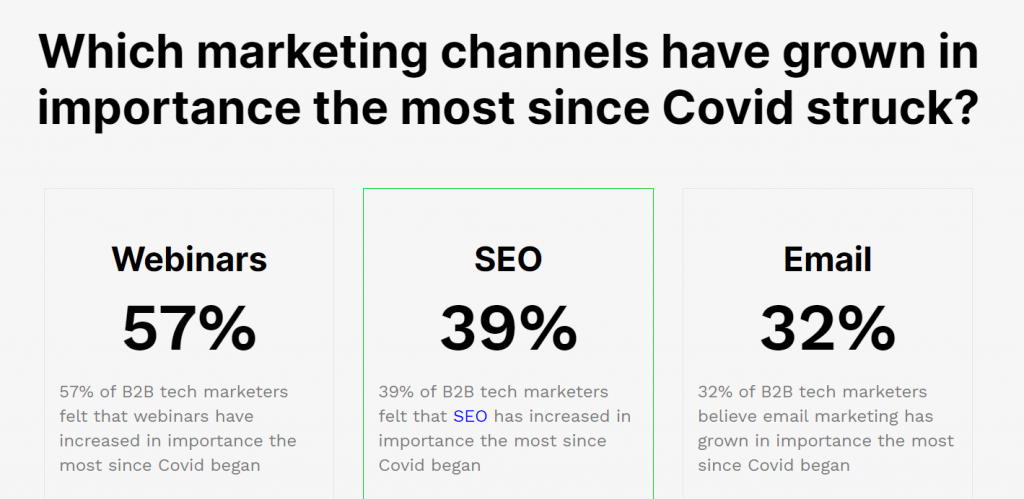
But not for TOFU, MOFU and BOFU
The rise in use of virtual content marketing does not affect a habit taken by companies, that of giving priority to TOFU when the time comes to do B2B content marketing. You don’t follow on TOFU? Really???
I mean “Top of Funnel» and compare the use we made of the various channels of marketing communication, included in the (funnel) marketing chimney, before and after the Pandemic.
So, following me now?

This marketing funnel therefore includes a top (the TOFU), a middle and a bottom, as I explained in another post analyzing the results of this study last year.
So, too much attention in content marketing on the components of the TOFU including 87% on brand (awareness). Not enough effort on content that promotes the creation and retention of leads, despite an improvement over 2018.
Or converting to customers and developing a long-term relationship based on loyalty to generate solid revenue growth.
According to the following chart, all indicators have been on the rise for three years, growing goals, even if they are still too TOFU oriented.
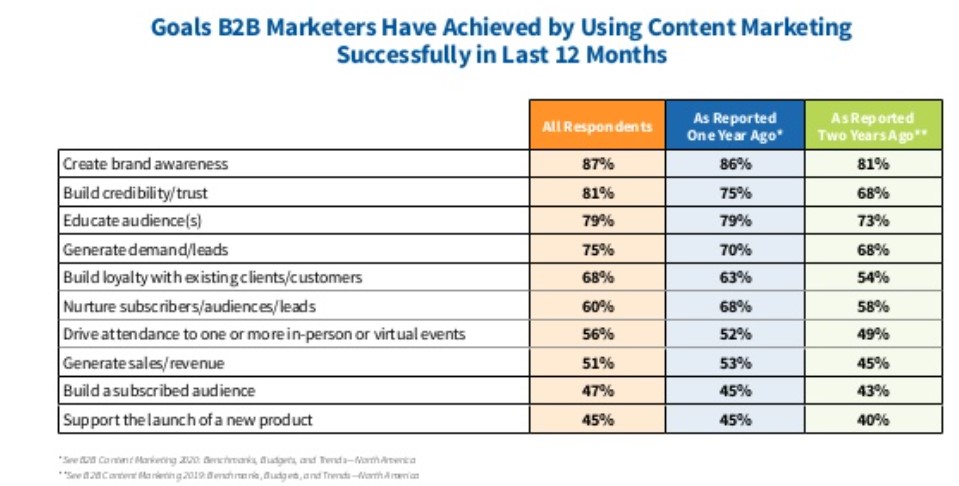
Let’s talk marketing blog
In light of the results of the Content Marketing Institute’s annual study, it is clear, despite the title of Hubspot’s blog post on the death of blogs, no, they are not dead. Far from it!
I attached a screenshot (In French) of a status on LinkedIn made by Lynda St-Arneault, president and founder of ExoB2B and I want to stress that I share her opinion on the relevance of the B2B marketing blog, COVID-19 Pandemic or not:

Let’s talk blog and SEO
I also want to share with you these 10 best SEO practices when publishing marketing content on your blog:
– Make sure you have incoming and outgoing links and good intertitles
– Don’t forget to categorize your blogs and add tags
– Make short sentences and paragraphs
– Identify your images/videos based on the subject of your blog
– Create an image with a title for highlighting
– Design titles that capture the imagination in the present tense
– Choose your target audience carefully
– Cite experts with hyperlinks to their blogs
– Offer quality, watch your spelling
– Write long enough posts
According to the most recent studies, the best length of a blog post would be 1,447 words (ideally). This would be the average length for your post to end up on page 1 on Google.
Calculation of words is very different from what I have already advised in one of my posts in 2017:
In short, we can conclude that the posts produced in 2021 are longer than before. And that means length, writing time and reading. Four hours of research, reading, writing, referencing and optimization.
About an hour and a half longer on average than in 2014. But I’m not going to tell you about 2006.
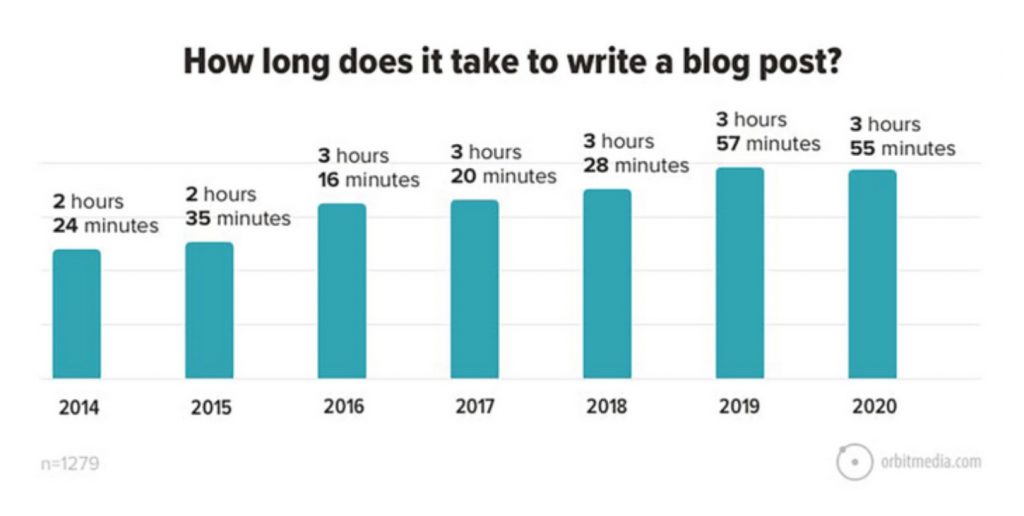
If you have any questions or comments, or you would like to share your experiences of marketing content in B2B with us, write to us.


